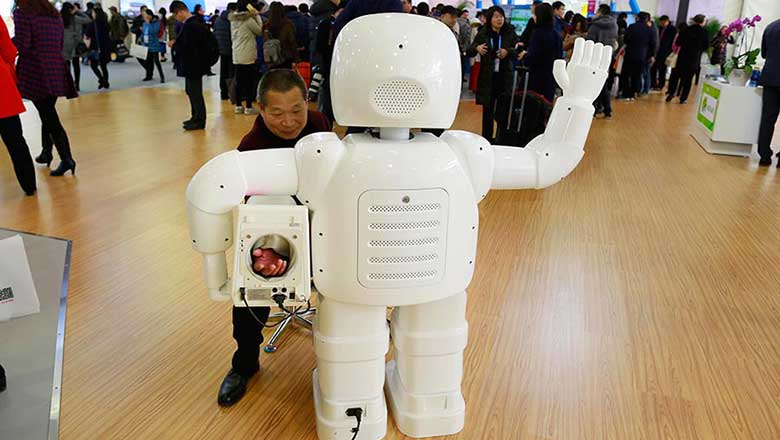Backgrounder: What is China's supply-side reform?
Updated: 2015-12-22 19:03
(Xinhua)
|
||||||||
BEIJING - As China strives to sustain growth, supply-side reform is the latest tool to be taken from the box and sharpened.
While supply-side economics, as a macroeconomic theory, is nothing new, China's supply-side reforms have some unique features.
Q: What is supply-side management?
A: Supply-side economics holds that the best way to stimulate economic growth is to lower barriers to production, particularly through tax cuts. The wealth-owners, rather than spending on direct "demand" purchases, will then be more enticed to invest in things that increase supply, such as new businesses, innovative goods and services.
To fully understand the supply side, it is easier to first understand the demand side.
China's three decades of rapid growth were fueled by capital investment, exports and consumption, usually thought of as being on the demand side.
In 2008, following the subprime crisis in the United States, China pushed out a 4-trillion-yuan (620 billion US dollars) stimulus package. The rationale was that pouring money into public works, principally infrastructure projects such as highways and railways, creates jobs and stimulates demand for construction materials like steel and cement. Wages paid to workers are, in turn, spent on necessities and business keeps going.
While this kind of stimulus can keep an economy afloat in times of crisis, problems such as overcapacity and rising home prices emerge. During the infrastructure frenzy, difficult issues such as income distribution were put on the back burner.
Q: What are the reforms?
A: Compared to stimulating demand, which tends to be short-lived, supply-side management is expected to generate sustainable, quality growth.
The Chinese economy is no longer galloping ahead on the back of investment, exports and consumption.
Adjusting banking regulations and interest rates has not been very successful in boosting investment or consumption.
With growth falling below 7 percent, China's economy is in dire need of a makeover. Instead of working on the demand side, attention has turned to stimulating business through tax cuts, entrepreneurship and innovation while phasing out excess capacity resulting from the previous stimulus. Such measures are intended to increase the supply of goods and services, consequently lowering prices and boosting consumption.
Q: Is supply-side management a substitute for demand-side management?
A: No. Attending to the supply side, albeit belatedly, does not reduce the importance of demand-side management, partly because stimulating the supply side takes time. Enterprises do not become more vibrant, efficient and productive overnight.
President Xi Jinping said last month that China should work more on the supply side "while moderately expanding overall demand." The same line appeared in a statement released on Monday following the Central Economic Work Conference. Demand-side management is not going away.
Q: What are China's concrete supply-side reforms?
A: Cutting housing inventories, tackling debt overhang, eliminating superfluous industrial capacity, cutting business costs, streamlining bureaucracy, urbanization and abandoning the one-child policy are all examples of supply-side reforms.
Viewed as a whole, these measures can also be considered "structural" reform. By cutting capacity, nurturing new industries and improving the mobility of the populace, vitality and productivity should increase.

 Whatever the shape or size of a tree, Merry Christmas!
Whatever the shape or size of a tree, Merry Christmas!
 The world in photos: Dec 14 - 20
The world in photos: Dec 14 - 20
 First American woman who works as captain for a Chinese airline
First American woman who works as captain for a Chinese airline
 Life of a family amid Beijing's red alert smog
Life of a family amid Beijing's red alert smog
 External coffin lid of 2,000-year-old Chinese tomb opened
External coffin lid of 2,000-year-old Chinese tomb opened
 First Miss Iraq named in decades
First Miss Iraq named in decades
 Iraq holds its first beauty contest in 40 years
Iraq holds its first beauty contest in 40 years
 Highlights at the Light of the Internet Expo
Highlights at the Light of the Internet Expo
Most Viewed
Editor's Picks

|

|

|

|

|

|
Today's Top News
Shooting rampage at US social services agency leaves 14 dead
Chinese bargain hunters are changing the retail game
Chinese president arrives in Turkey for G20 summit
Islamic State claims responsibility for Paris attacks
Obama, Netanyahu at White House seek to mend US-Israel ties
China, not Canada, is top US trade partner
Tu first Chinese to win Nobel Prize in Medicine
Huntsman says Sino-US relationship needs common goals
US Weekly

|

|








